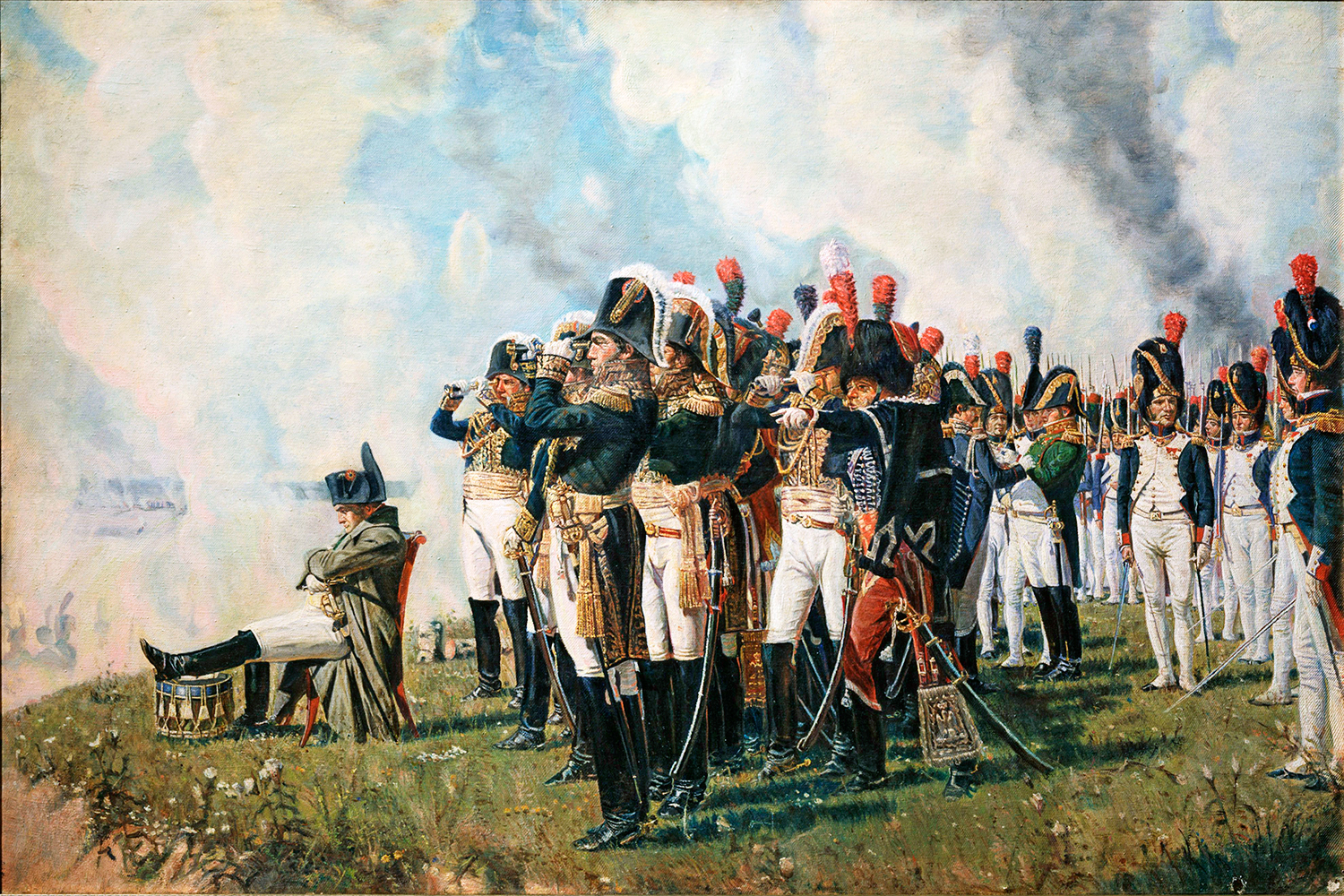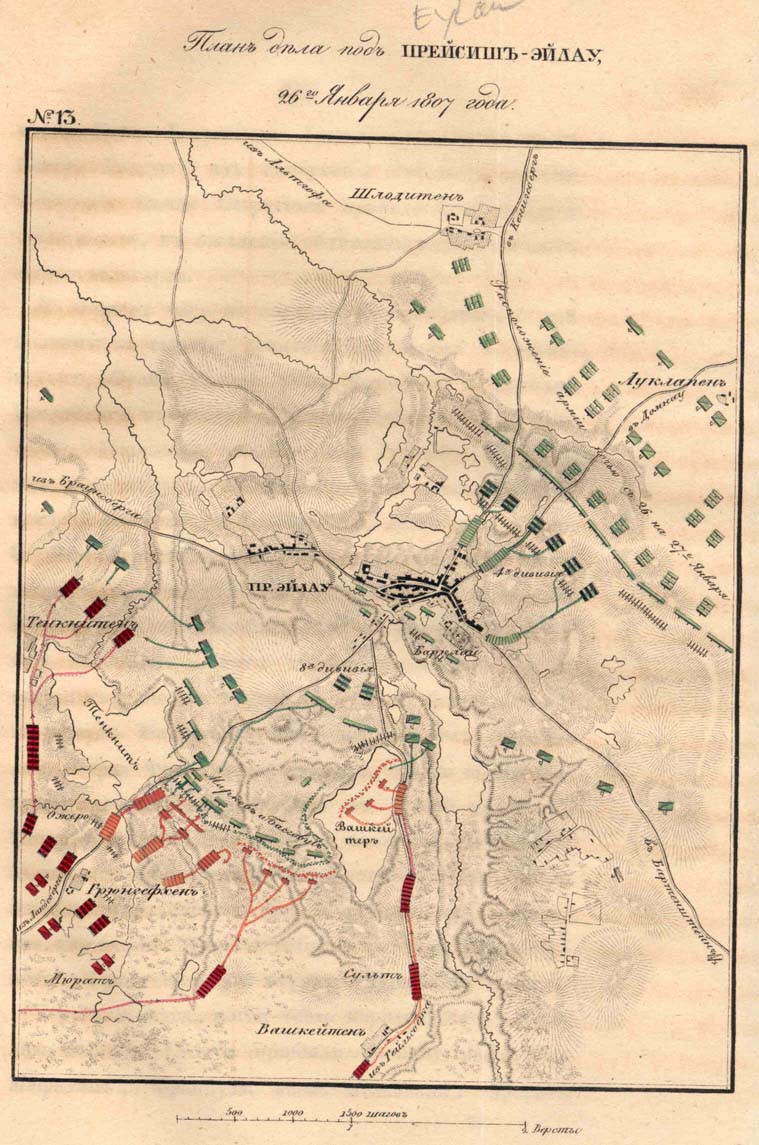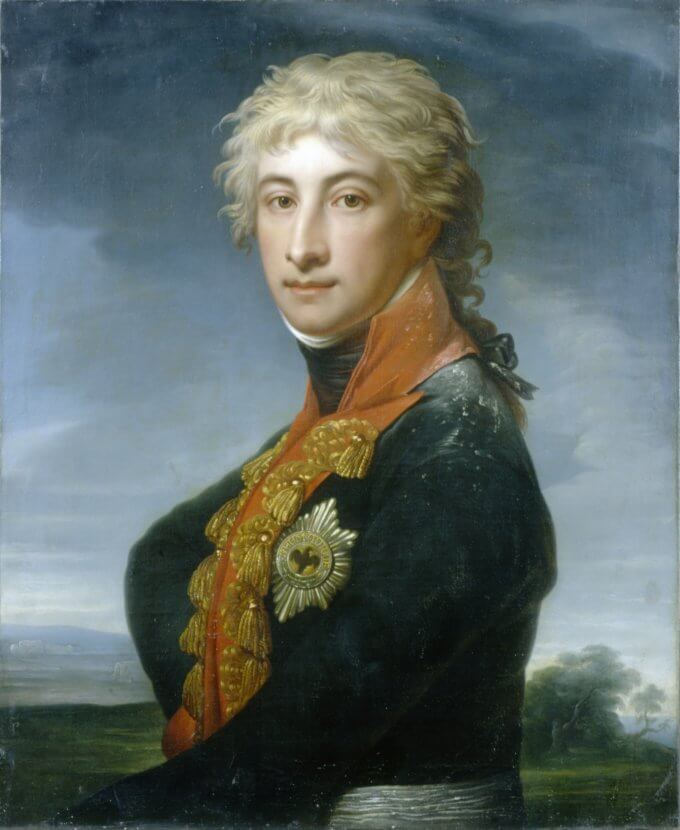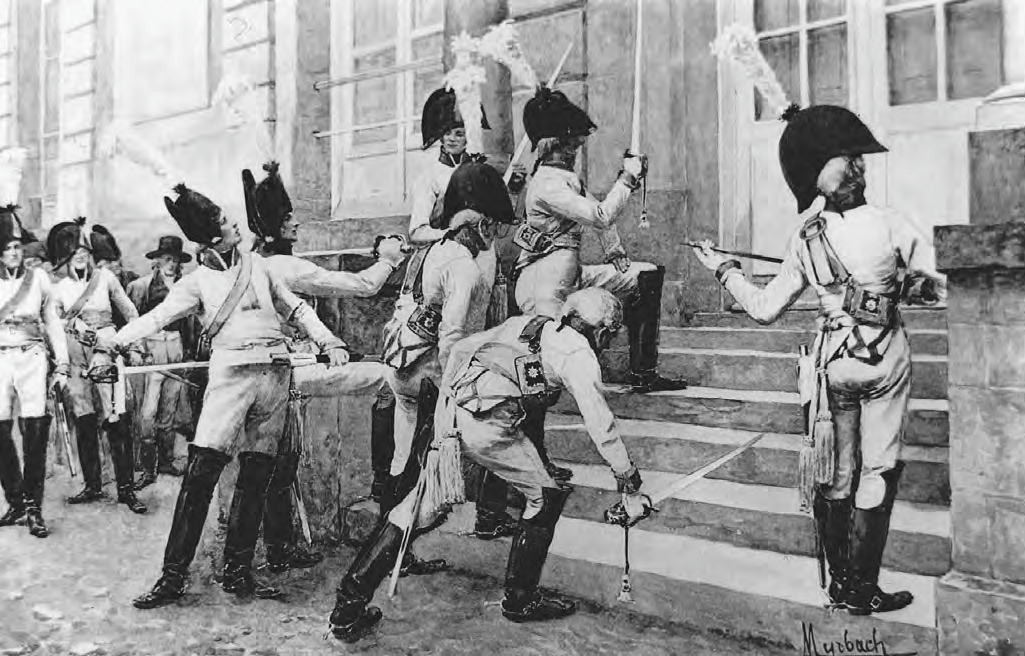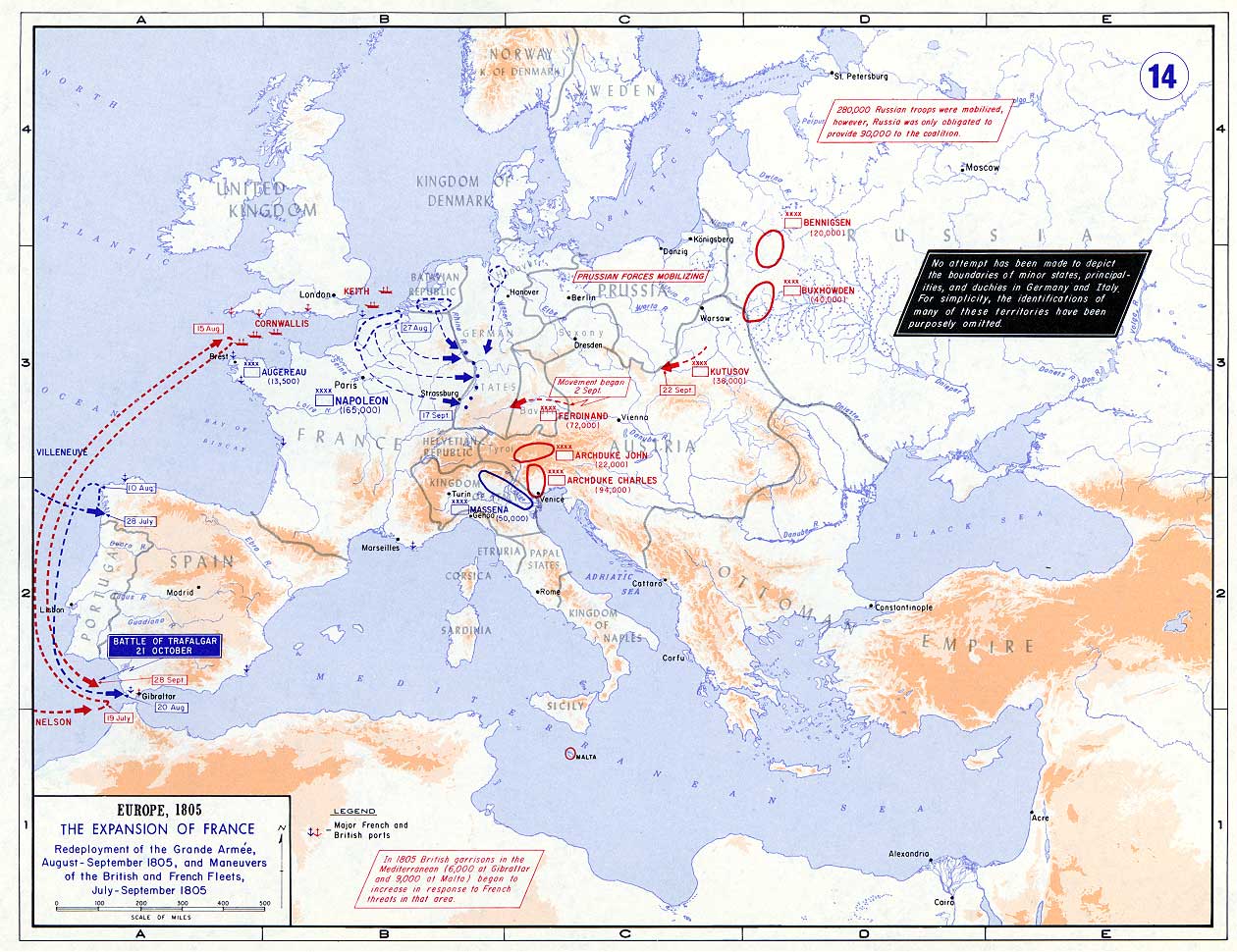|
Louis-Gabriel Suchet, Duc D'Albuféra
Louis-Gabriel Suchet, duc d' Albuféra (; 2 March 1770 – 3 January 1826), was a French Marshal of the Empire and one of the most successful commanders of the French Revolutionary and Napoleonic Wars. He is regarded as one of the greatest generals of the Napoleonic Wars. Early life Suchet was born on 2 March 1770 in Lyon, the son of Jean-Pierre Suchet and Anne-Marie Jacquier. His mother died four years later. His father was a silk merchant, and Suchet originally intended to follow a business career. He received a solid education and joined his father's business in 1787, working as an apprentice for two years. Upon Jean-Pierre's death in January 1789, Suchet and his brother Gabriel-Catherine took over the family enterprise, which they decided to expand under the name ''Maison Suchet frères''. However, the French Revolution led Suchet to volunteer, in 1791, for the cavalry of the National Guard at Lyon. He displayed abilities which secured rapid military promotions, and ... [...More Info...] [...Related Items...] OR: [Wikipedia] [Google] [Baidu] |
Marshal Of The Empire
Marshal of the Empire () was a civil dignity during the First French Empire. It was established by on 18 May 1804 and to a large extent reinstated the formerly abolished title of Marshal of France. According to the ''Sénatus-consulte'', a Marshal was a grand officer of the Empire, entitled to a high-standing position at the court and to the presidency of an electoral college. Although in theory reserved "to the most distinguished generals", in practice Emperor of the French, Emperor Napoleon granted the title according to his own wishes and convictions and made at least a few controversial choices. Although not a military rank, a Marshal displayed four silver stars, while the top military rank, General of Division, displayed three stars. Furthermore, the Marshalate quickly became the prestigious sign of the supreme military attainment and it became customary that the most significant commands be given to a Marshal. Each Marshal held his own coat of arms, was entitled to specia ... [...More Info...] [...Related Items...] OR: [Wikipedia] [Google] [Baidu] |
French Invasion Of Switzerland
The French invasion of Switzerland () occurred from January to May 1798 as part of the French Revolutionary Wars. The independent Old Swiss Confederacy collapsed from the invasion and simultaneous internal revolts called the "Helvetic Revolution". The Swiss ''ancien régime'' institutions were abolished and replaced by the centralised Helvetic Republic, one of the sister republics of the French First Republic. Background Before 1798, the modern canton of Vaud belonged to the canton of Bern, to which it had a subject status. Moreover, the majority of the Francophone Vaudois felt oppressed by German-speaking Bern. Several Vaudois patriots such as Frédéric-César de La Harpe advocated for independence. In 1795, La Harpe called on his compatriots to rise up against the Bernese aristocrats, but his appeal fell to deaf ears, and he had to flee to Revolutionary France, where he resumed his activism. In late 1797, French general Napoleon Bonaparte, who had just successfully conq ... [...More Info...] [...Related Items...] OR: [Wikipedia] [Google] [Baidu] |
Battle Of Eylau
The Battle of Eylau (also known as the Battle of Preussisch-Eylau) was a bloody and strategically inconclusive battle on 7 and 8 February 1807 between Napoleon's and the Imperial Russian Army under the command of General Levin August von Bennigsen near the town of Bagrationovsk, Preussisch Eylau in East Prussia. Late in the battle, the Russians received timely reinforcements from a Kingdom of Prussia, Prussian division of Anton Wilhelm von L'Estocq, von L'Estocq. After 1945, the town was renamed Bagrationovsk as part of Kaliningrad Oblast, Russia. The engagement was fought during the War of the Fourth Coalition, part of the Napoleonic Wars. Napoleon's armies had smashed the army of the Austrian Empire in the Ulm Campaign and the combined Austrian and Russian armies at the Battle of Austerlitz on 2 December 1805. On 14 October 1806, Napoleon crushed the armies of the Kingdom of Prussia at the Battle of Jena–Auerstedt and hunted down the scattered Prussians at Battle of Pren ... [...More Info...] [...Related Items...] OR: [Wikipedia] [Google] [Baidu] |
Battle Of Ostrołęka (1807)
The Battle of Ostrołęka was fought on 16 February 1807 between a French force under General of Division Anne Jean Marie René Savary and a Russian force under Lieutenant General Ivan Essen. The French defeated the Russians and forced them to retreat to the east to Wyoki Mazowiecki. Weather conditions caused both sides to go into winter quarters immediately after the battle, which occurred during the War of the Fourth Coalition, part of the Napoleonic Wars. Ostrołęka is located in the northeast part of modern Poland, but in 1807 it belonged to the Kingdom of Prussia. Background Savary was in command of the V Corps on the extreme French right so as to guard the approaches to Warsaw by the Narew and Bug, and to cover the right rear of the movement northwards. After the French were driven out of Ostrów on 3 February, Savary received orders to abandon Brok and retire upon Ostrolenka, so as to strengthen his communication with the Emperor's army. Essen was ordered ... [...More Info...] [...Related Items...] OR: [Wikipedia] [Google] [Baidu] |
Battle Of Pułtusk
A battle is an occurrence of combat in warfare between opposing military units of any number or size. A war usually consists of multiple battles. In general, a battle is a military engagement that is well defined in duration, area, and force commitment. An engagement with only limited commitment between the forces and without decisive results is sometimes called a skirmish. The word "battle" can also be used infrequently to refer to an entire operational campaign, although this usage greatly diverges from its conventional or customary meaning. Generally, the word "battle" is used for such campaigns if referring to a protracted combat encounter in which either one or both of the combatants had the same methods, resources, and strategic objectives throughout the encounter. Some prominent examples of this would be the Battle of the Atlantic, Battle of Britain, and the Battle of France, all in World War II. Wars and military campaigns are guided by military strategy, whereas ba ... [...More Info...] [...Related Items...] OR: [Wikipedia] [Google] [Baidu] |
Battle Of Saalfeld
The Battle of Saalfeld took place on 10 October 1806, at which a French force of 12,800 men commanded by Marshal Jean Lannes defeated a Prussian-Saxon force of 8,300 men under Prince Louis Ferdinand. The battle took place in Thuringia in what was the Ernestine duchy of Saxe-Coburg-Saalfeld. The battle was the second clash in the Prussian Campaign of the War of the Fourth Coalition. Background French Movements Napoleon had arranged the into three columns to cross the Thuringian Forest to attack the Prussian-Saxon army. The westernmost column was headed by V Corps commanded by Jean Lannes, with Pierre Augereau's VII Corps following behind. They had orders to march from Coburg via Gräfenthal due at Saalfeld on 11 October. V Corps set out on 8 October, and by the end of 9 October was at Gräfenthal with light cavalry on the road to Saalfeld. At 5 am on 10 October, Lannes with Louis-Gabriel Suchet's division and Anne-François-Charles Trelliard brigade of light cavalr ... [...More Info...] [...Related Items...] OR: [Wikipedia] [Google] [Baidu] |
War Of The Fourth Coalition
The War of the Fourth Coalition () was a war spanning 1806–1807 that saw a multinational coalition fight against Napoleon's First French Empire, French Empire, subsequently being defeated. The main coalition partners were Kingdom of Prussia, Prussia and Russian Empire, Russia with Electorate of Saxony, Saxony, Franco-Swedish War, Sweden, and United Kingdom of Great Britain and Ireland, Great Britain also contributing. Excluding Prussia, some members of the coalition had previously been fighting France as part of the War of the Third Coalition, Third Coalition, and there was no intervening period of general peace. On 9 October 1806, Prussia declared war on France and joined a renewed coalition, fearing the rise in French power after the defeat of Austrian Empire, Austria and establishment of the French-sponsored Confederation of the Rhine in addition to having learned of French plans to cede Prussian-desired Electorate of Hanover, Hanover to Britain in exchange for peace. Prussi ... [...More Info...] [...Related Items...] OR: [Wikipedia] [Google] [Baidu] |
Battle Of Austerlitz
The Battle of Austerlitz (2 December 1805/11 Frimaire An XIV French Republican calendar, FRC), also known as the Battle of the Three Emperors, was one of the most important military engagements of the Napoleonic Wars. The battle occurred near the town of Slavkov u Brna, Austerlitz in the Austrian Empire (now Slavkov u Brna in the Czech Republic). Around 158,000 troops were involved, of which around 24,000 were killed or wounded. The battle is often cited by military historians as one of Napoleon's tactical masterpieces, in the same league as other historic engagements like Hannibal's Battle of Cannae, Cannae (216 BC) or Alexander the Great's Battle of Gaugamela, Gaugamela (331 BC).Byron Farwell, Farwell p. 64. "Austerlitz is generally regarded as one of Napoleon's tactical masterpieces and has been ranked as the equal of Arbela, Cannae, and Leuthen."Trevor N. Dupuy, Dupuy p. 102 Note: Dupuy was not afraid of expressing an opinion, and he classified some of his subjects as Great ... [...More Info...] [...Related Items...] OR: [Wikipedia] [Google] [Baidu] |
Battle Of Schöngrabern
The Battle of Schöngrabern, also known as the Battle of Hollabrunn, was an engagement in the Napoleonic Wars during the War of the Third Coalition, fought on 16 November 1805 near Hollabrunn in Lower Austria, four weeks after the Battle of Ulm and two weeks before the Battle of Austerlitz ( Slavkov, Moravia - now Czech Republic). Battle The Russian army of Kutuzov was retreating north of the Danube before the French army of Napoleon. On 13 November 1805, Marshals Murat and Lannes, commanding the French advance guard, had captured a bridge over the Danube at Vienna by falsely claiming that an armistice had been signed, and then rushing the bridge while the guards were distracted. Kutuzov needed to gain time to make contact near Brno (Brünn) with reinforcements led by Buxhowden. He ordered his rearguard under Major-General Prince Pyotr Bagration to delay the French. Murat and Lannes commanded the 4th and 5th Corps and the Reserve Cavalry. Bagration took up a position abou ... [...More Info...] [...Related Items...] OR: [Wikipedia] [Google] [Baidu] |
Battle Of Ulm
The Battle of Ulm on 16–19 October 1805 was a series of skirmishes, at the end of the Ulm Campaign, which allowed Napoleon I to trap an entire Austrian army under the command of Karl Freiherr Mack von Leiberich with minimal losses and to force its surrender near Ulm in the Electorate of Bavaria. Background In 1805, the United Kingdom, the Austrian Empire, Sweden, and the Russian Empire formed the Third Coalition to overthrow the French Empire. When Bavaria sided with Napoleon, the Austrians, 72,000 strong under Mack, prematurely invaded while the Russians were still marching through Poland. The Austrians expected the main battles of the war to take place in northern Italy, not Germany, and intended only to protect the Alps from French forces. A popular but apocryphal legend has it that while the Austrians used the Gregorian calendar, the Russians were still using the Julian calendar. This meant that their dates did not correspond, and the Austrians were brought i ... [...More Info...] [...Related Items...] OR: [Wikipedia] [Google] [Baidu] |
War Of The Third Coalition
The War of the Third Coalition () was a European conflict lasting from 1805 to 1806 and was the first conflict of the Napoleonic Wars. During the war, First French Empire, France and French client republic, its client states under Napoleon I and its ally Spain opposed an alliance, the Third Coalition, which was made up of the United Kingdom of Great Britain and Ireland, United Kingdom, the Austrian Empire, the Russian Empire, Kingdom of Naples, Naples, Kingdom of Sicily, Sicily, and Sweden. Kingdom of Prussia, Prussia remained neutral during the war. Britain had already been at war with France following the breakdown of the Treaty of Amiens, Peace of Amiens and remained the only country still at war with France after the Treaty of Pressburg (1805), Treaty of Pressburg. From 1803 to 1805, Britain stood under constant threat of a Napoleon's planned invasion of the United Kingdom, French invasion. The Royal Navy, however, assured its naval dominance at the Battle of Trafalgar in Oc ... [...More Info...] [...Related Items...] OR: [Wikipedia] [Google] [Baidu] |
